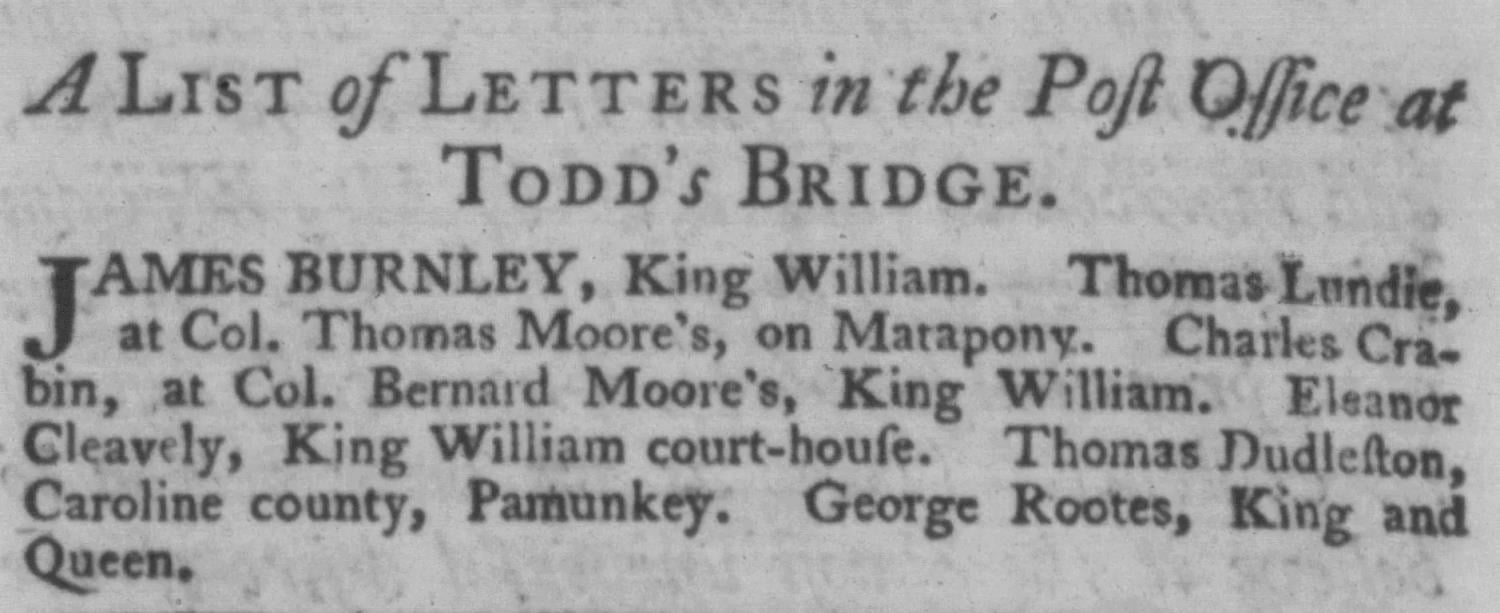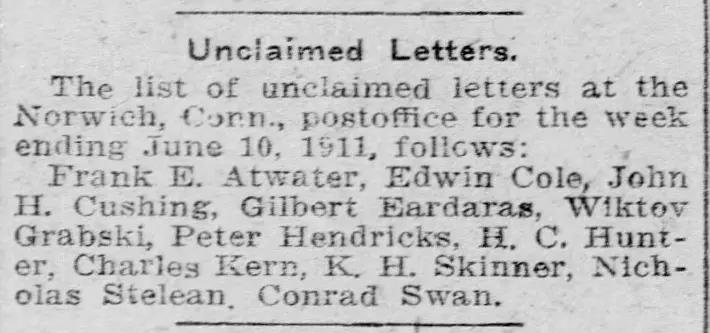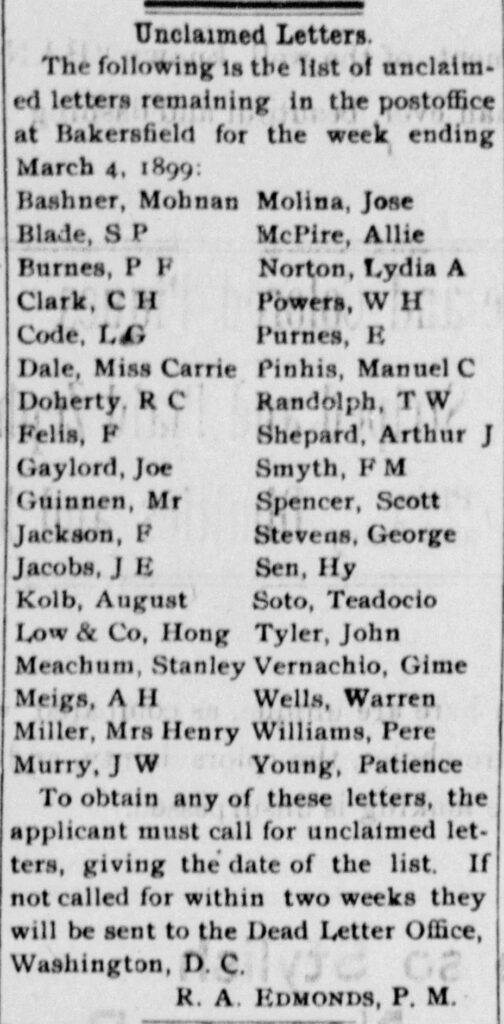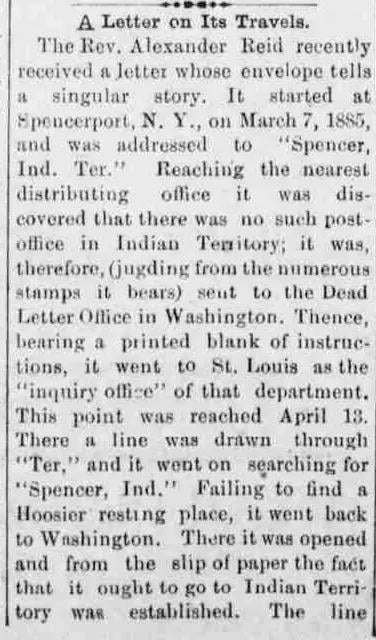Exploring Unclaimed Mail in Historical Newspapers

Have you ever been reading through old newspapers, searching for clues about your ancestors, when you stumbled upon a list of unclaimed letters? These intriguing notices, often overlooked by researchers, can hold the key to unlocking fascinating stories and historical insights. In this blog post, we’ll explore the mysteries behind unclaimed letters in old newspapers and what they can tell us about our ancestors.
The Evolution of Postal Services
Before the advent of modern postal systems, mail delivery was fraught with challenges. Misdirected, undelivered, and unclaimed letters were common. In the 18th and 19th centuries, post offices were still perfecting methods to handle mail efficiently. As a result, letters that couldn’t find their recipients often ended up on public lists published in local newspapers. This practice highlights the developmental stages of early postal services and their efforts to connect people across distances.
The Role of Newspapers in Community Communication
Publishing unclaimed letters served as a crucial public service. These lists notified individuals that mail awaited them at the post office, particularly important when people frequently moved for work or in pursuit of new land and opportunities. Newspapers, serving as the primary means of mass communication, played a vital role in ensuring that important information, whether personal, legal, or business-related, reached its intended recipient eventually.
The Stories Behind the Letters
The lists of unclaimed letters are not just lists; they are snapshots into the social and historical context of a particular era. Here are some of the stories that these letters might reveal:
1. Migration and Movement
Many unclaimed letters belonged to individuals who had recently moved or were in transit. These letters can shed light on the mobility of populations during different times, such as the Great Migration or the westward expansion. By tracing the paths of these letters, you might uncover clues about your ancestors’ journeys and the reasons behind their relocations.

2. Economic Hardship
During times of economic struggle, such as the Great Depression, people often moved in search of work, leading to lost connections and unclaimed mail. These letters can provide glimpses into the financial challenges your ancestors faced and how they coped with difficult circumstances.
3. Social Stigma
In some cases, unclaimed letters might have been intentionally abandoned due to social stigma or personal circumstances that individuals wished to escape. For example, a letter addressed to an unmarried woman from a man who was not her husband could have caused a scandal, leading her to leave the letter unclaimed to protect her reputation.
4. Historical Events
Significant historical events, such as wars, natural disasters, or epidemics, could also contribute to the accumulation of unclaimed letters. These letters might hold stories of separated families, displaced individuals, or those who never returned home.
How to Research Unclaimed Letters

For researchers, genealogists, and history buffs, unclaimed letter listings are invaluable. If you come across a list of unclaimed letters in an old newspaper, here are some steps you can take to investigate further:
- Note the date and location of the newspaper. This will help you contextualize the historical and social backdrop of the unclaimed letters.
- Look for any familiar names or addresses. If you find a name that matches your ancestor or a location relevant to your family history, take note of it.
- Cross-reference the names with other historical records, such as census data, city directories, or vital records. This can help you confirm the identities of the individuals mentioned and uncover more details about their lives.
- Research the historical context of the time period. Understanding the events, social norms, and challenges of the era can provide valuable insights into the reasons behind the unclaimed letters.
- Share your findings with other family members or genealogy researchers. They might have additional information or perspectives that can help you piece together the stories behind the letters.
One Letter’s Travels

This clipping is part of a story that recounts the remarkable journey of a letter addressed to Rev. Alexander Reid. The letter, sent from Spencerport, NY, on March 7, 1885, was originally addressed to “Spencer, Ind. Ter.” Upon reaching the nearest distribution office, it was discovered that no such post office existed in Indian Territory. Consequently, the letter was sent to the Dead Letter Office in Washington, D.C. From there, following a set of printed instructions, it was redirected to St. Louis, the “inquiry office” of the postal department. Failing to find a suitable destination, the letter returned to Washington. Finally, after multiple attempts and corrections, it was determined that the intended destination was “Greeley, Col.” The letter, having traveled extensively and undergone several inspections, was ultimately delivered to its rightful owner on June 2, 1885, nearly three months after its initial mailing. To read the other half of the story in the actual historical newspaper from 1885, click HERE.
Conclusion
Unclaimed letters in old newspapers offer a fascinating glimpse into the lives of our ancestors and the times they lived in. By researching these letters and the stories behind them, you can uncover valuable insights and add depth to your family history. So, the next time you come across a list of unclaimed letters, take a moment to wonder about the mysteries they hold. You might just discover a piece of your ancestor’s story waiting to be told.
Want to Learn More About Unclaimed Letters?
The Smithsonian’s National Postal Museum offers a wealth of information on this intriguing topic. Visit their online exhibit dedicated to the Dead Letter Office, where you can explore the history and inner workings of this unique postal department. Don’t miss their spotlight on a rare Dead Letter album, which provides a captivating visual journey through the stories and secrets hidden within undelivered mail. Discover the untold tales and mysteries that lie waiting to be uncovered in the Smithsonian’s National Postal Museum’s collection.